Profesor Michael O’Neal z Uniwersytetu Harvarda przedstawił teorię pięciu sił struktury przemysłowej. Uważa, że istnieje pięć sił promujących konkurencję w przemyśle. Dzięki tej strukturze możesz opracować strategie przetrwania i wzrostu dla swojej firmy, ocenić atrakcyjność i potencjał rozwoju innych branż oraz zbadać poziom rentowności danej branży.
Czym jest analiza 5 sił?
Analiza Pięciu Sił może pomóc firmom ocenić atrakcyjność branży, jak trendy wpłyną na konkurencję w branży, w których branżach firma powinna konkurować – oraz jak firmy mogą się pozycjonować, aby osiągnąć sukces.
Analiza Pięciu Sił to narzędzie strategiczne zaprojektowane, aby dać globalny przegląd, a nie szczegółową technikę analizy biznesowej. Pomaga ocenić mocne strony pozycji rynkowej, opierając się na pięciu kluczowych siłach. W ten sposób Pięć Sił najlepiej działa, gdy patrzy się na cały sektor rynku, a nie na własny biznes i kilku konkurentów.
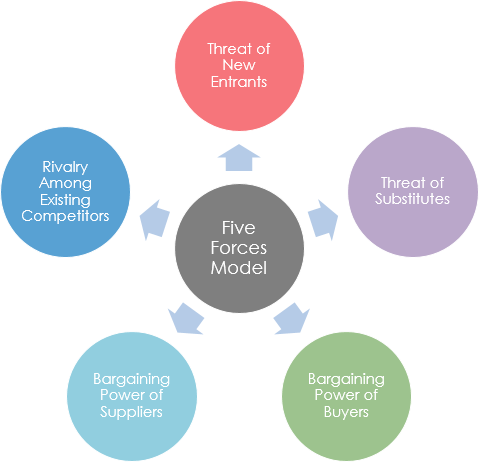
Główną ideą tego modelu jest to, że kluczem do uzyskania przewagi konkurencyjnej przez przedsiębiorstwo jest rentowność (atrakcyjność branży) branży, w której się znajduje, oraz względna pozycja konkurencyjna przedsiębiorstwa w tej branży.
Dlatego podstawowym zadaniem zarządzania strategicznego jest wybór potencjalnie wysoko rentownych branż poprzez analizę pięciu czynników, w tym dostawców, nabywców, obecnych konkurentów, produktów alternatywnych i potencjalnych nowych graczy. Po wybraniu branż przedsiębiorstwa powinny wybrać jedną z trzech strategii, takich jak niskokosztowa, dywersyfikacja produkcji lub centralizacja, jako swoją strategię konkurencyjną, opierając się na swoich mocnych stronach i porównaniu pięciu sił.
Model pięciu sił, który można wykorzystać do analizy branży, to:
- Konkurent ─Stopień konkurencji wśród istniejących producentów.
- Dostawcy — zbiorowa siła przetargowa dostawców.
- Substytuty — zagrożenie ze strony produktów lub usług substytucyjnych.
- Nabywca — Ogólna siła przetargowa nabywcy.
- Nowi uczestnicy — zagrożenia spowodowane przez nowych dostawców, którzy mogą dołączyć do twojego rynku.
Zestawienie tych pięciu sił określi rentowność branży. Na tej podstawie przeprowadź systematyczną analizę branży, do której chcesz wejść:
- Zgodnie z skalą produktu i zasięgiem geograficznym, jasno zrozum branżę, do której chcesz wejść. Zanim spróbujesz przeprowadzić analizę, dokładnie przemyśl, jak zdefiniować branżę.
- Najpierw zidentyfikuj uczestników, którzy stanowią te 5 sił, i wyraźnie je sklasyfikuj.
- Następnie oceń podstawową siłę napędową każdej siły i osądź, czy dojrzałość jest silna czy słaba.
- Potem usiądź i spokojnie o tym pomyśl, oceń całą strukturę przemysłową i dowiedz się, jakie siły są w rzeczywistości najważniejsze.
- Po zakończeniu powyższych działań, przeanalizuj ostatnie i możliwe przyszłe zmiany każdej siły i spróbuj przewidzieć, jak te zmiany wpłyną na branżę.
- Ostatnim krokiem jest próba znalezienia pozycji rynkowej, która jest najsłabszym miejscem wszystkich rodzajów sił ─ ─ To miejsce znajduje się w twojej korzystnej pozycji w strukturze przemysłowej.
Branża zmienia się z czasem. Im lepiej rozumiesz branżę, tym większa szansa na znalezienie nowych strategicznych możliwości i wykorzystanie ich do szybszego uzyskania przewagi. Gdy masz głębokie zrozumienie branży, możesz również zrozumieć bilans zysków i strat głównych producentów w branży.
Analiza Pięciu Sił – Przykład na Żywo
Pięć Sił to zagrożenie ze strony nowych graczy rynkowych, zagrożenie ze strony produktów substytucyjnych, siła klientów, siła dostawców oraz rywalizacja w branży, która określa intensywność konkurencji i atrakcyjność rynku.
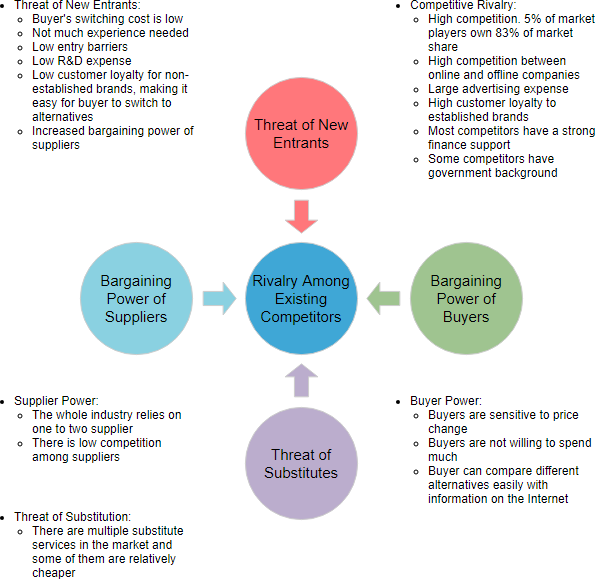
Odkryj więcej szablonów analizy Pięciu Sił
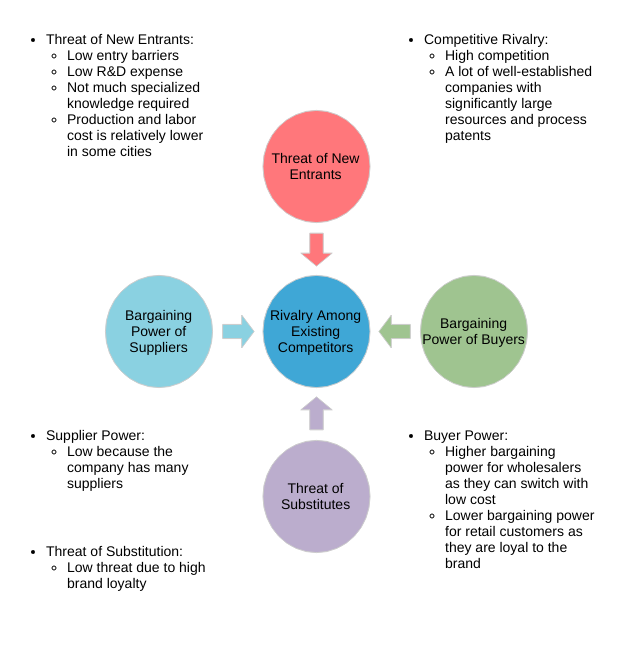
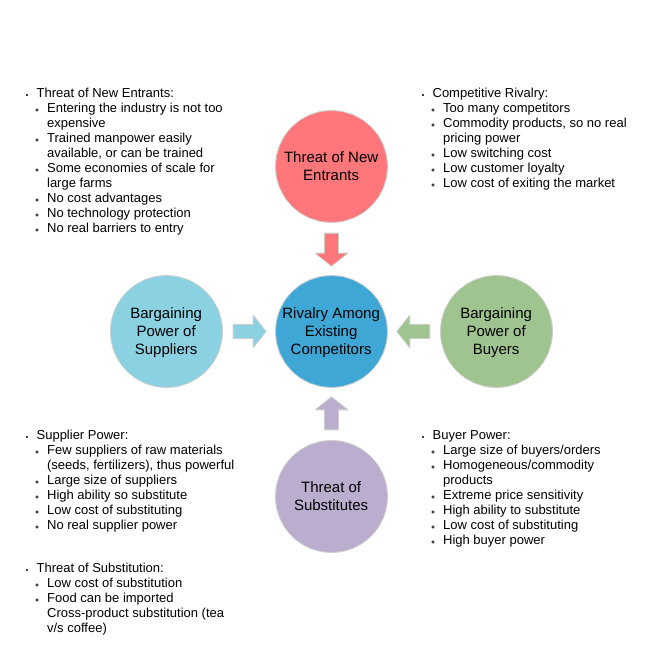
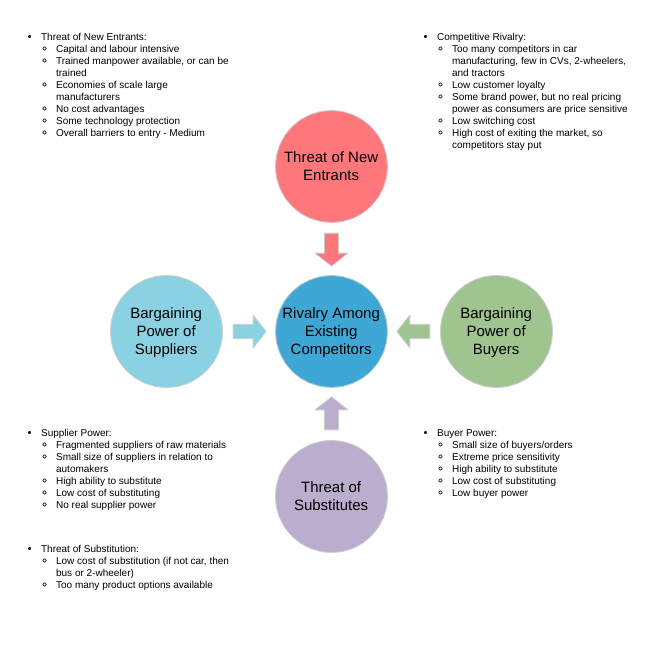
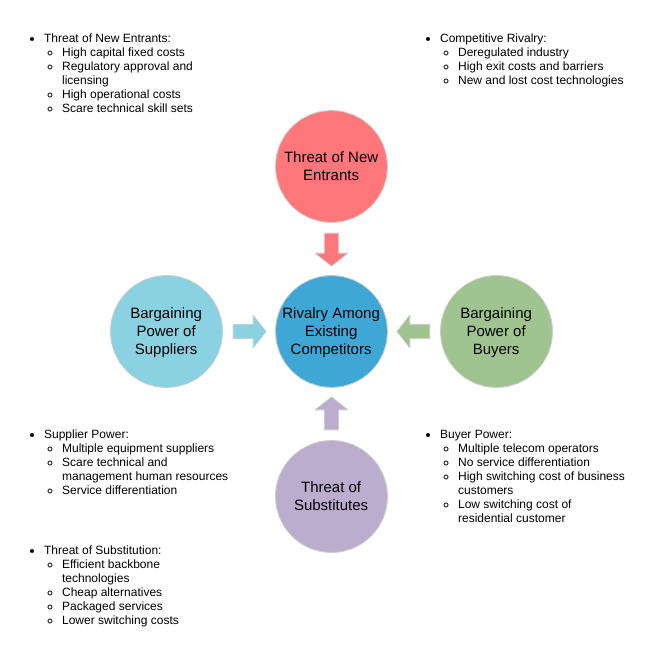
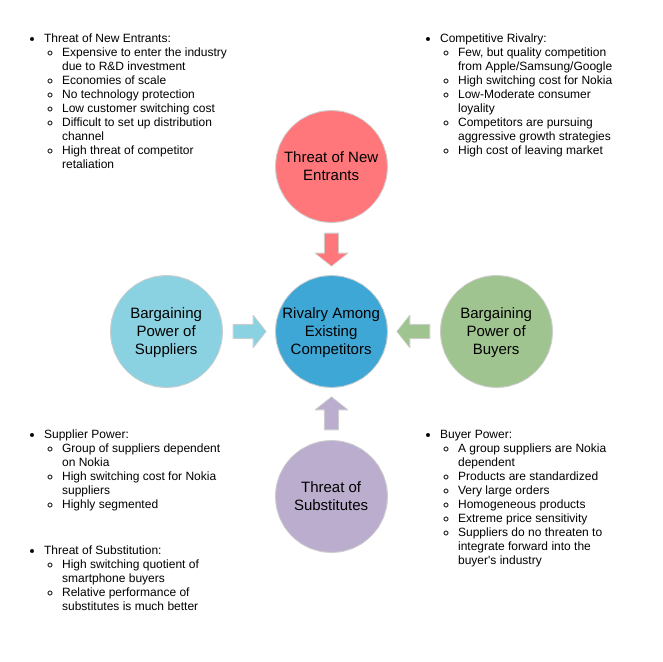
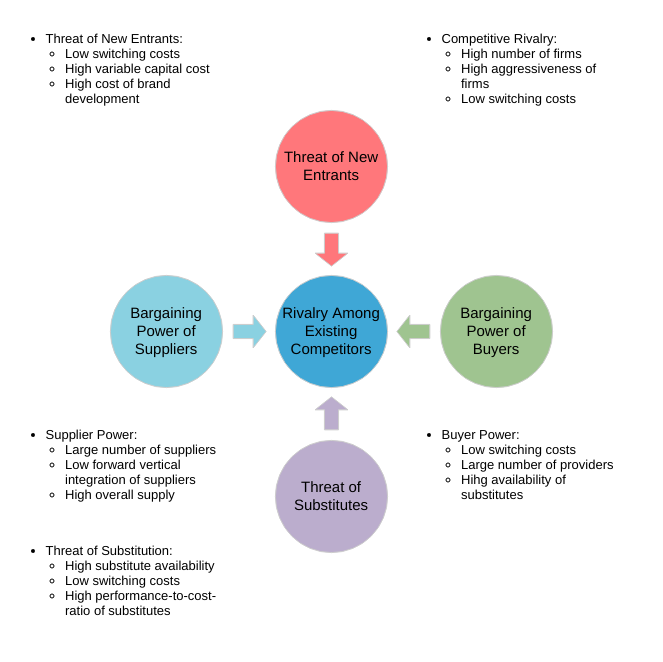
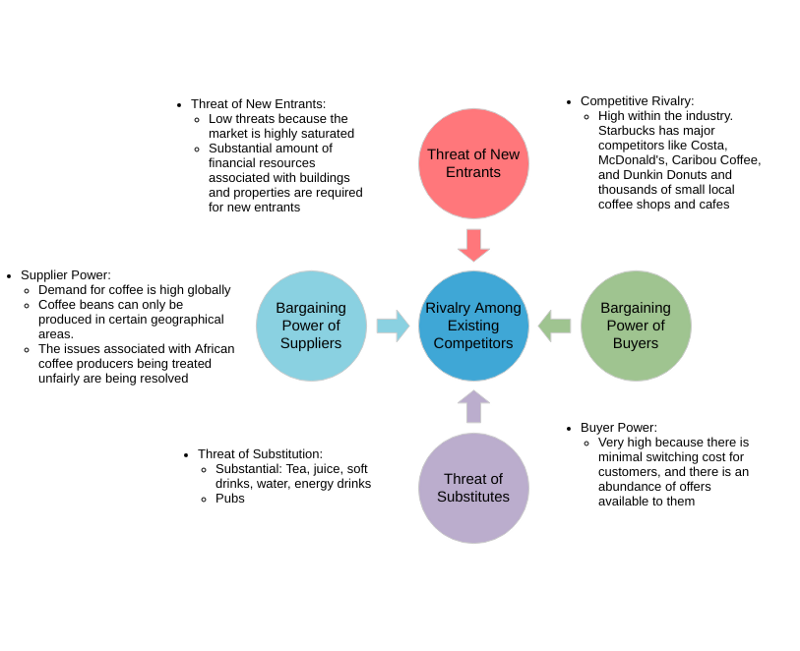
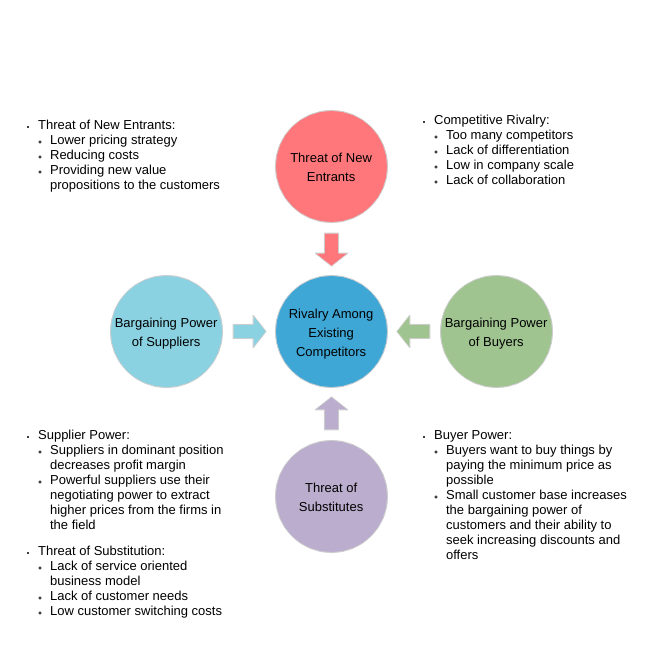
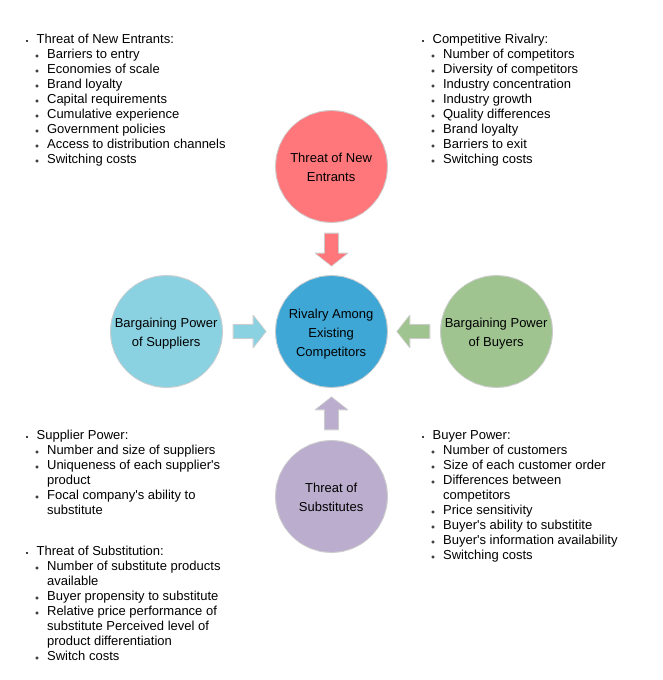
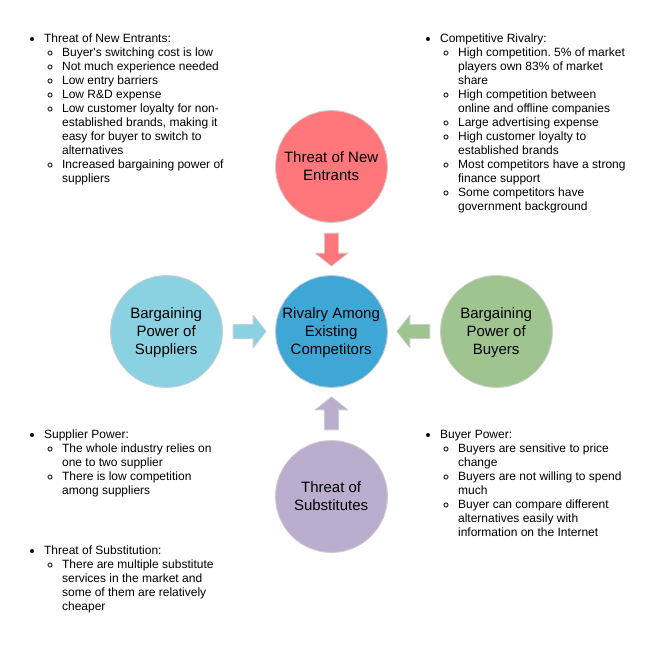
Ten post dostępny jest również w Deutsch, English, Español, فارسی, Français, Bahasa Indonesia, 日本語, Portuguese, Ру́сский, Việt Nam, 简体中文 and 繁體中文













